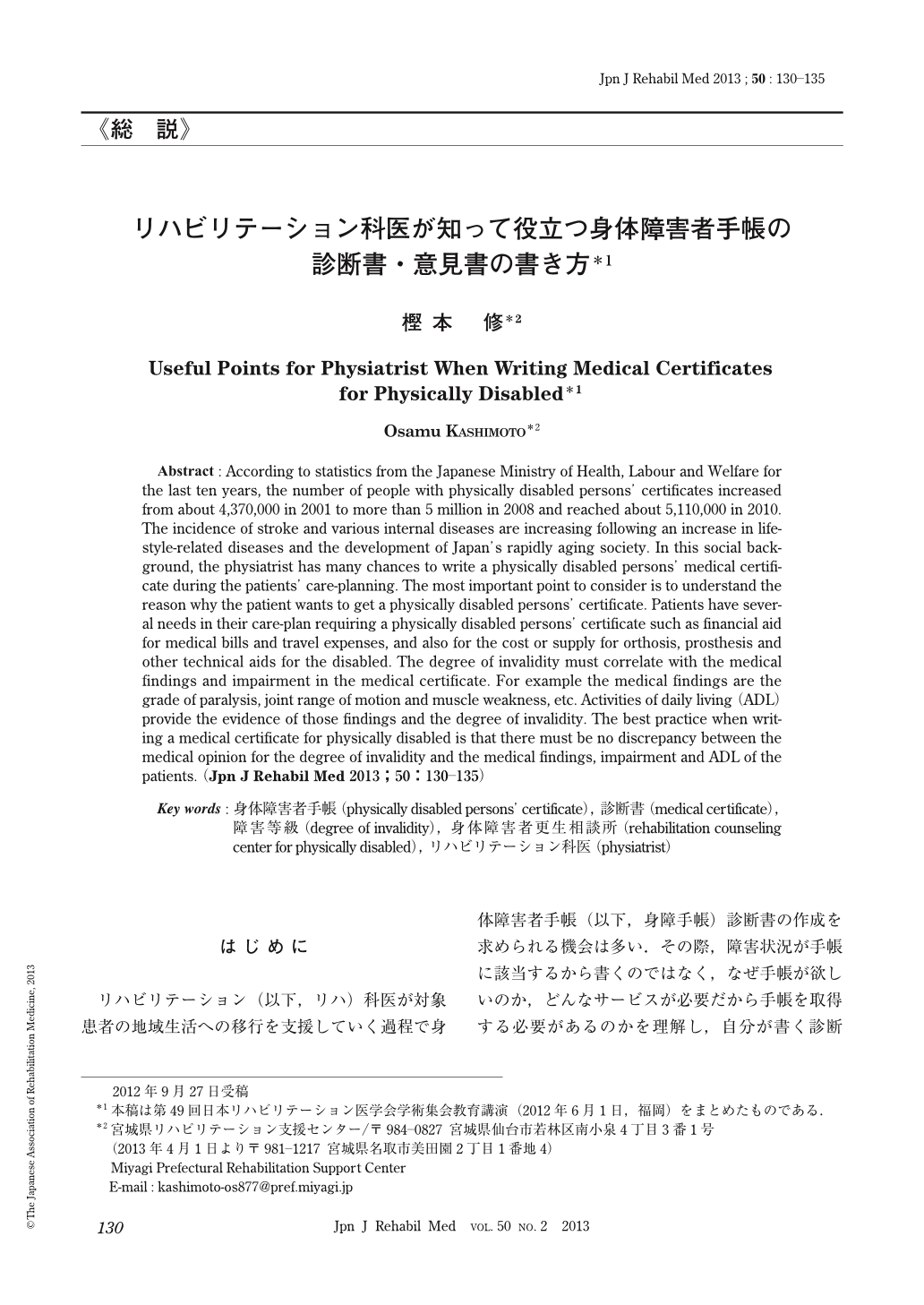Japanese
English
- 販売していません
- Abstract 文献概要
- 1ページ目 Look Inside
- 参考文献 Reference
はじめに
リハビリテーション(以下,リハ)科医が対象患者の地域生活への移行を支援していく過程で身体障害者手帳(以下,身障手帳)診断書の作成を求められる機会は多い.その際,障害状況が手帳に該当するから書くのではなく,なぜ手帳が欲しいのか,どんなサービスが必要だから手帳を取得する必要があるのかを理解し,自分が書く診断書・意見書が対象者のケアマネジメントにつながっていることを念頭に置いて書かねばならない.不備な診断書や等級意見が認定基準に合わない意見書は手帳交付の遅延につながり,ケアプランにも影響しかねない.診断書作成の要点を理解することは,リハ科医にとって必要なスキルとも言える.認定基準の解説は専門書等1~4)に譲り,本稿では,最近の身障手帳に関する統計と筆者が障害認定の事務局として10数年間関わってきた経験から,リハ科医が知っておくべき身障手帳診断書・意見書の書き方のポイントを解説する.
Abstract : According to statistics from the Japanese Ministry of Health, Labour and Welfare for the last ten years, the number of people with physically disabled persons' certificates increased from about 4,370,000 in 2001 to more than 5 million in 2008 and reached about 5,110,000 in 2010. The incidence of stroke and various internal diseases are increasing following an increase in lifestyle-related diseases and the development of Japan's rapidly aging society. In this social background, the physiatrist has many chances to write a physically disabled persons' medical certificate during the patients' care-planning. The most important point to consider is to understand the reason why the patient wants to get a physically disabled persons' certificate. Patients have several needs in their care-plan requiring a physically disabled persons' certificate such as financial aid for medical bills and travel expenses, and also for the cost or supply for orthosis, prosthesis and other technical aids for the disabled. The degree of invalidity must correlate with the medical findings and impairment in the medical certificate. For example the medical findings are the grade of paralysis, joint range of motion and muscle weakness, etc. Activities of daily living (ADL) provide the evidence of those findings and the degree of invalidity. The best practice when writing a medical certificate for physically disabled is that there must be no discrepancy between the medical opinion for the degree of invalidity and the medical findings, impairment and ADL of the patients.

Copyright © 2013, The Japanese Association of Rehabilitation Medicine. All rights reserved.


